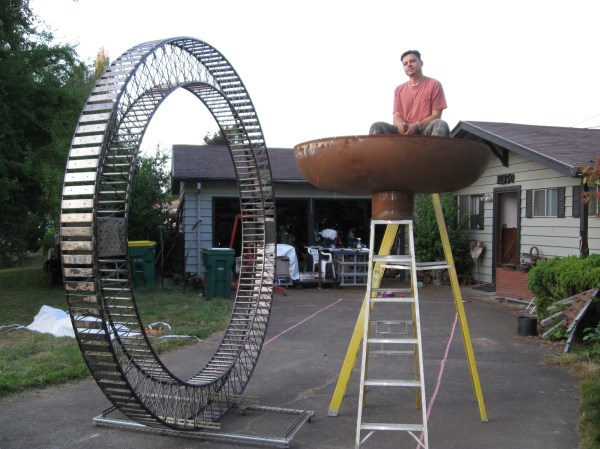If you’re marooned on a desert island, you want to have a Professor who can build useful items out of coconuts. [LostMachine] is one of those guys, and he’s currently building a land-loving pirate ship. The wacky vehicle will use the giant wheel above to propel the vessel while the captain sits comfortably in the lofty crow’s nest. A crack-pot concept? Not really, he plans to take this to Burning Man where it will be a fairly useful build compared to the folks who have really gone off the deep end.
The story here is the build quality. Take some time to watch his videos which we’ve embedded after the break. In the first, he details his method for creating a precisely level building surface on top of his uneven driveway. This is accomplished by welding supports in a circle that are level compared to the center point. He goes on to share his liquid-cooling system for cutting the pipe supports with a custom-built jig and an old windshield washer water system pump from an RV (second video). The final video shows the construction of the wheel which came in with 2000 welds and about 250-300 hours of construction time.
If you hadn’t guessed, [LostMachine] is a structural engineer. Unfortunately he was laid-off this spring which has put a damper in his building schedule. We hope that with a quality project like this in his portfolio a new job is just around the corner for him.
Continue reading “Argh, Thar Be A Big Wheel” →















